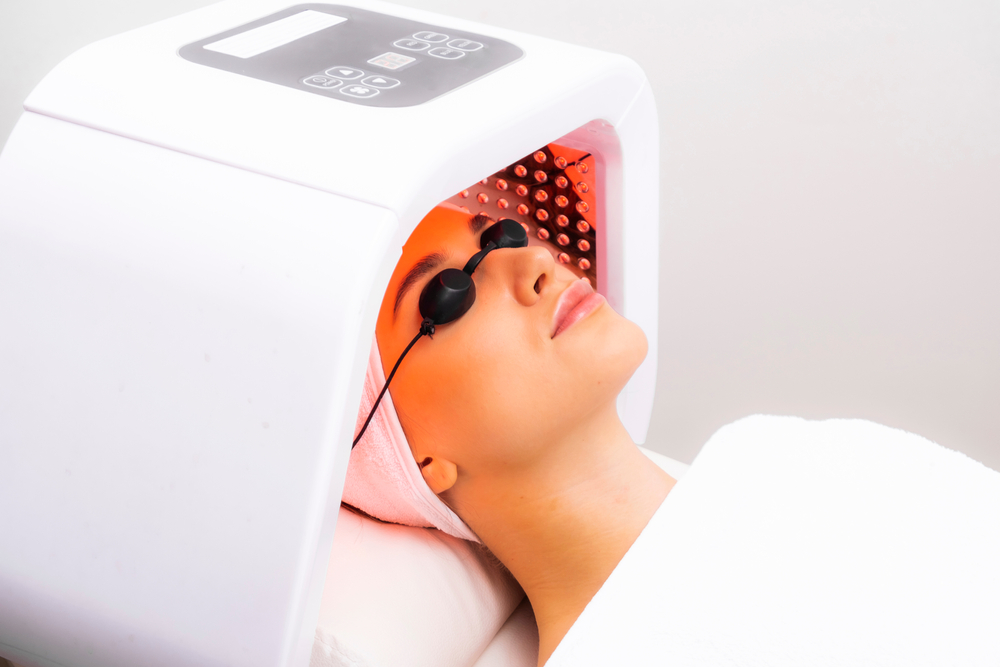In recent years, photobiomodulation therapy has gained popularity as a versatile and non-invasive treatment option for various medical conditions.
This therapy involves the use of low-level light therapy (LLLT) to stimulate healing and tissue regeneration, and it is also known as low-level laser therapy or cold laser therapy.
The treatment has been found to have positive effects on various conditions, such as pain management, wound healing, neurological conditions, and skin health.
If you’re considering photobiomodulation therapy as a treatment option, it’s important to understand how it works, what conditions it can treat, and what to expect during a treatment session.
In this article, we’ll explore photobiomodulation therapy in more detail, including its uses, benefits, and frequently asked questions.
What is Photobiomodulation?
Photobiomodulation therapy is a form of light therapy that uses light-emitting diodes (LEDs) or low-level lasers to stimulate healing and tissue regeneration.
At River Stone Wellness Centre, we use the THOR handheld laser system and the award-winning NovoTHOR light pod.
The light penetrates the skin, where it is absorbed by the cells and converted into energy. This energy is used to promote cellular metabolism and regeneration, which can help repair damaged tissues and reduce inflammation.
The therapy can be used to treat a wide range of conditions, including musculoskeletal pain, inflammation, wound healing, and neurological conditions such as stroke and traumatic brain injury.
In addition, it is used in cosmetic treatments to improve skin health and reduce the appearance of fine lines and wrinkles.
With its many benefits and non-invasive nature, photobiomodulation therapy is quickly becoming a popular choice for patients seeking alternative treatments for various medical conditions.
Uses for Photobiomodulation Therapy
Photobiomodulation therapy is a highly versatile and effective treatment option that can be used to address a wide range of medical conditions, from pain management and wound healing to neurological conditions and skin health.
Pain Management
One of the key uses of this therapy is in pain management.
Studies have shown that photobiomodulation therapy can reduce pain and inflammation in various musculoskeletal conditions, such as back pain, arthritis and sports injuries.
The therapy works by promoting cellular regeneration and reducing inflammation, which can help to relieve pain and promote healing.
Wound Healing
Another important use of photobiomodulation therapy is in wound healing.
The therapy has been shown to accelerate the healing process in wounds, clear bruising and promote tissue regeneration.
This is because the therapy stimulates cellular metabolism and promotes the production of collagen, which is essential for wound healing.
Photobiomodulation therapy can be used to treat various types of wounds, including surgical wounds, burns, and ulcers.
Neurological Conditions
Photobiomodulation therapy has also been used to treat neurological conditions, such as Alzheimer’s disease, stroke, and traumatic brain injury such as concussion.
The therapy works by promoting cellular regeneration and improving blood flow to the brain, which helps to reduce the risk of neurological damage and improve cognitive function.
Skin Health
In addition to its medical uses, photobiomodulation therapy is also used in cosmetic treatments to improve skin health.
Photobiomodulation therapy works by promoting the production of elastin and collagen, which helps to improve skin texture and tone.
Photobiomodulation therapy is a non-invasive and safe alternative to more invasive cosmetic treatments, such as surgery or injections.
Benefits of Photobiomodulation Therapy
Photobiomodulation therapy is a promising treatment option that has gained popularity in recent years due to its numerous benefits, including being non-invasive, pain-free, safe, and effective.
It has shown great potential in treating various medical conditions and promoting overall health and wellness.
Here are some of the many benefits:
Photobiomodulation is Non-Invasive
One of the key benefits is that photobiomodulation therapy does not require any surgery or medication.
Therefore, patients can avoid the risks and potential complications associated with more invasive treatment options!
Instead, photobiomodulation therapy uses light to stimulate healing, regenerate tissue, reduce pain and clear inflammation.
Photobiomodulation is Pain-Free
In addition to being non-invasive, photobiomodulation therapy is also pain-free.
There is no discomfort during the treatment, which can be a relief for those who are sensitive to pain.
This also means that there is no need for anesthesia or pain medication, which can have their own risks and side effects.
Photobiomodulation is Safe
Another important benefit of photobiomodulation therapy is that it is a safe treatment option.
There are no known risks or side effects associated with the therapy, and it has been used safely for many years.
Photobiomodulation is Effective
Finally, photobiomodulation therapy has been shown to be an effective treatment for various conditions.
It has been used to treat musculoskeletal pain, inflammation, wound healing, and neurological conditions, among others.
The therapy works by stimulating cellular metabolism and regeneration, which can help to repair damaged tissues and reduce inflammation.
FAQs
If you’re considering photobiomodulation therapy as a treatment option, you may have some questions.
In this FAQ section, we’ll address some of the most common questions about photobiomodulation therapy, including how it works and what to expect during a treatment session.
Is Photobiomodulation the Same as Red Light Therapy?
Sort-of. Red-light therapy is a subclass of photobiomodulation. True photobiomodulation uses medically-approved equipment and the dose, wavelength and frequency of the light meets specific standards to achieve the treatment objectives.
Red light therapy is often used for cosmetic purposes, such as reducing the appearance of fine lines and wrinkles.
What Does a Photobiomodulation Session Look Like?
During the session, the patient will typically lie down or sit comfortably while a therapist or healthcare professional applies a device emitting low-level light to the affected area. Nerve roots and lymph vessels and nodes are also targeted.
After the session, patients can typically resume their normal activities immediately, with no downtime required.
How Often Should You Do Photobiomodulation?
The frequency of photobiomodulation therapy depends on the severity of the symptoms and the condition being treated.
Generally, it is recommended to have multiple sessions of photobiomodulation therapy to achieve the best results.
The frequency and duration of the therapy should be discussed with a healthcare provider or a qualified practitioner.
How Long Does a Photobiomodulation Therapy Session Last?
The length of photobiomodulation therapy sessions can vary depending on your condition and unique situation. Sessions can range from 15 minutes to up to an hour.
Is Photobiomodulation Therapy Covered By Insurance?
Photobiomodulation therapy may be covered by your insurance as part of a chiropractic, physiotherapy, massage or manual osteopathy treatment. Coverage can vary depending on your specific insurance plan and the condition being treated.
It is best to discuss coverage and payment options with your photobiomodulation provider.
Photobiomodulation Therapy Edmonton
At River Stone Wellness Centre, we specialize in providing targeted healthcare solutions, including photobiomodulation therapy.
Our experienced team of caring professionals will work with you to create a customized treatment plan that addresses your specific needs and helps you achieve optimal health and wellness.
If you are interested in learning more about photobiomodulation therapy or any of our other services, please don’t hesitate to contact us.
Our friendly and knowledgeable staff is here to answer any questions you may have.
Contact us today to schedule your appointment and take the first step toward better health and wellness!


